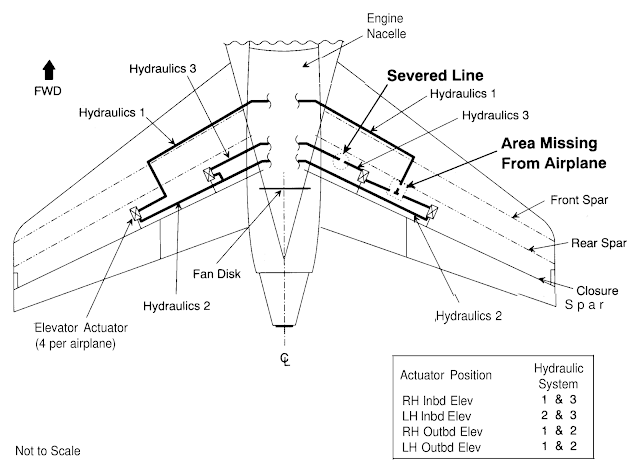Aileron
ailerons
aircraft
airlines
Automatic slats
Flaps
How flaps work
hydrostatic pressure
pressure
How Aircraft hydraulic system works?
Aircraft hydraulics system
Today, an aircraft in the modern times uses a hydraulic system to operate many of its critical components. Taking time back, hydraulic systems well still incorporated into the aircraft as a form of hydraulic breaks. With the passage of time, as the technologies evolved, so did the use of the hydraulic system. At present, hydraulics are used in many aspects in the aircraft, which includes, landing gears, brakes as well as flight control surfaces. Regardless of the size and shape of the aircraft, the basic principles and functionality of the hydraulic systems virtually remain the same.
The main reason behind this increased usage of the hydraulic systems are;
- They are very cost effective to install,
- Relatively easier maintenance,
- Can operate at maximum efficiency even at the toughest flight conditions.
Apart from this, the components used in a hydraulic system are typically lightweight, their installation is not complicated and they process a simple investigation methodology. Adding to their design and incorporation of fluid dynamics, the hydraulics have maximum efficiency with negligible frictional losses.
BASIC COMPONENTS OF A HYDRAULIC SYSTEM
All though hydraulic systems have proved to be an extremely safe and durable introduction in the aircraft industry, certain redundant systems are embedded into the aircraft to enable safe operation in case of failure of the hydraulic systems.The basic components of a hydraulic system are:
Pump – The pump is a device that is used to generate power in order to pressurize the system.
Reservoir – The reservoir is the vessel that is used to store the hydraulic fluid which is supplied to the system.
Actuating Cylinder – The actuating cylinder is that part where the major function of the hydraulic system is operated. For instance, these cylinders are installed at the flaps of the aircraft so that the pilot can withdraw and extend them as per his/her requirements.
Pressure Relief Valve – The pressure relief valve is used to protect the hydraulic system in case of excess pressurization.
Heat Exchanger – The heat exchanger is a device used to help maintain the hydraulic fluid at an optimum temperature.
These are basic elements that constitute a hydraulic system. However, in larger aircraft or in aircraft with more scope have additional components.
WORKING OF A HYDRAULIC SYSTEM
The hydraulic system of an aircraft works on the principle that, it uses a pressurized liquid to help in movement of certain body components from one position to another position. The hydraulic system has a wide range of pressure capacity from a few hundred pounds per square inch to more than 5000 pounds per square inch. This wide range of the hydraulic system is to cope with different sizes of aircraft and different loads.Pascal's law is the main science used behind this principle of hydraulics system, which states that when you apply pressure anywhere onto a liquid which is enclosed in a system will exert the same pressure by distributing it in the surrounding medium.
During the flight, the pilot brings the hydraulic system to activation method by switching on the input or flight control device. As the pump starts operating, the actuation begins to move.
The actuator forwards it's motion by directing it to a control surface or any other device that needs to be moved to the desired motion. The pressure is released when the system needs to be moved in the reverse direction.
HYDRAULIC FLUIDS
Hydraulic fluids majorly function in order to convey power between components. However, they are also used for other reasons such as protection of hydraulic machine components. There are many important factors that one needs to keep in his/her mind before selecting an optimum fluid to be used in the hydraulic system, they are:
Supposed to be non compressible ( with high bulk modulus), Less volatility, Moderate heat transfer, Optimum thermal capacity and conductivity, good viscosity, be able to minimize internal leakage, High viscosity index, Special function, Fire resistance, Friction modifications, Radiation resistance, Environmental impact, Low toxicity when new or decomposed, Biodegradability, Functioning life and Material compatibility.
Usually, hydraulic fluids incorporated are based on mineral oil or water. Skydrol is the widely used hydraulic dluid in the aircraft.
Thanks for reading!
suggested article: How the aircraft engine oil system works?
Hydraulic fluids majorly function in order to convey power between components. However, they are also used for other reasons such as protection of hydraulic machine components. There are many important factors that one needs to keep in his/her mind before selecting an optimum fluid to be used in the hydraulic system, they are:
Supposed to be non compressible ( with high bulk modulus), Less volatility, Moderate heat transfer, Optimum thermal capacity and conductivity, good viscosity, be able to minimize internal leakage, High viscosity index, Special function, Fire resistance, Friction modifications, Radiation resistance, Environmental impact, Low toxicity when new or decomposed, Biodegradability, Functioning life and Material compatibility.
Usually, hydraulic fluids incorporated are based on mineral oil or water. Skydrol is the widely used hydraulic dluid in the aircraft.
Thanks for reading!
suggested article: How the aircraft engine oil system works?








